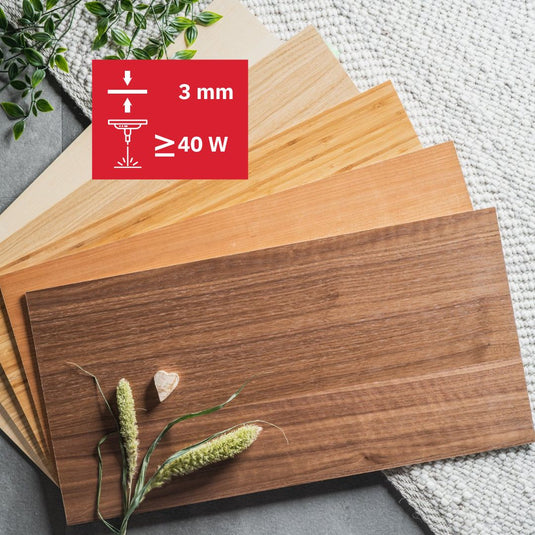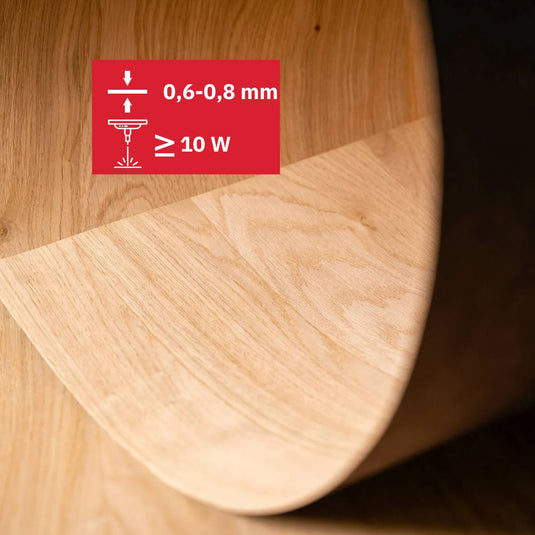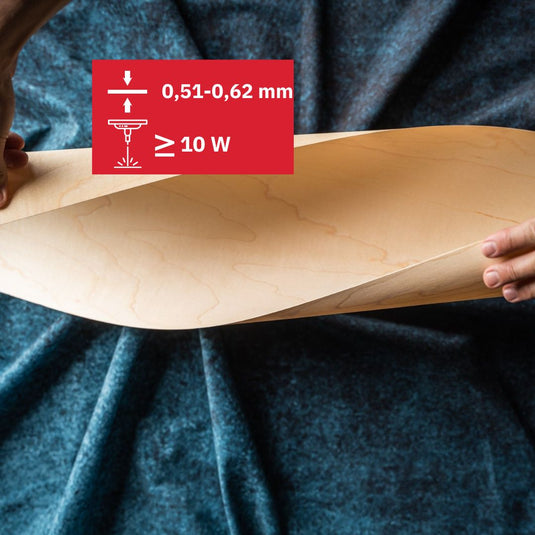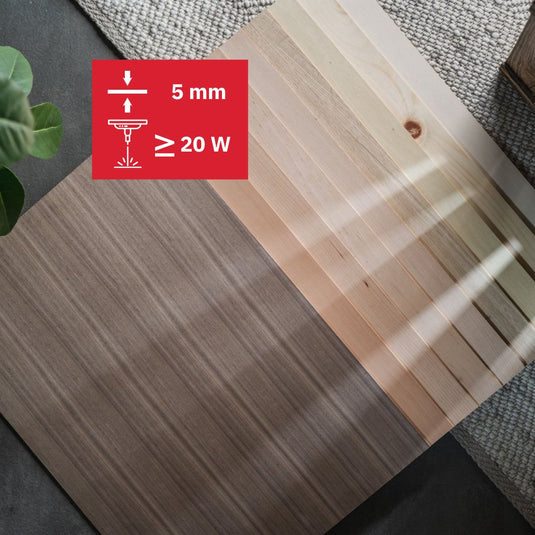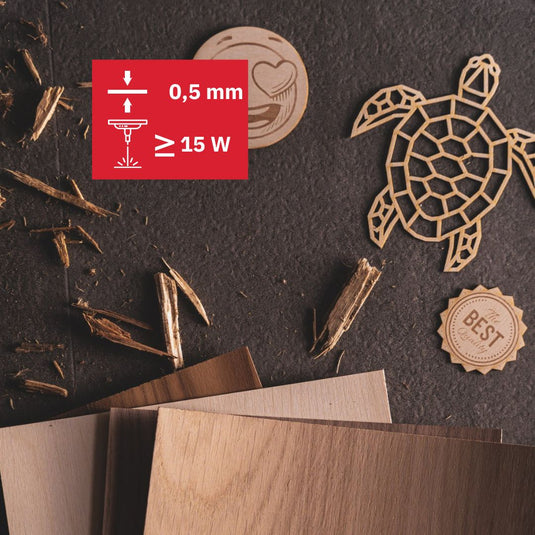What to do if the plywood warps during laser cutting?
A problem many underestimate
Many who laser cut plywood know the problem: Especially thin plywood panels often warp – sometimes already on first contact with the laser. This leads to inaccurate cuts, uneven edges, or even damaged projects. But warping can be greatly reduced with some simple measures before laser cutting.

Why thin plywood warps
Plywood is a living material that reacts to its environment. The main causes of warping are:
-
Moisture: Wood absorbs moisture from the air or releases it. Uneven moisture absorption causes the wood to warp. This happens especially quickly with thin panels and Plywood, where different layers react differently.
-
Temperature: Fluctuations in temperature affect humidity and also cause warping. Additionally, the heat from the laser can directly cause distortion.
Practical tips for preparation: How to store and treat plywood properly
To keep your plywood as flat and stable as possible, you should follow the right steps already when receiving and storing it:
-
Store plywood dry and flat
-
Store your wood panels flat, not standing on the edge. This prevents the panel from warping.
-
Make sure the storage surface is flat and stable. It's best to use a smooth, firm base.
-
You can place thin spacers (e.g., wooden slats) between the panels so that air can circulate on both sides and the moisture can balance out.
-
-
Ensure constant humidity
-
Ideal is 40–60% relative humidity. Too high humidity causes the wood to swell, too dry air can make it brittle and cause it to shrink.
-
Avoid direct sunlight or storage places in damp basements or garages. Proximity to radiators is also unfavorable as it dries out the air.
-
-
Let wood acclimate slowly
-
If you have bought wood, let it sit in your workspace for at least 24 to 48 hours before processing it. This allows it to adjust to the temperature and humidity conditions there.
-
-
Straighten warped panels again
-
Lay the wood flat and weigh it down for several days with heavy, flat objects (e.g., steel plates, stacks of books).
-
Another option is to slightly moisten the wood and then place it under a press. However, you should be careful not to damage the wood.
-
-
Additionally weigh down or fix before laser cutting
-
Especially thin wood panels can warp due to the heat of the laser even during cutting.
-
Fix the material with magnets, clamps, or wire tensioners on the laser table to keep it flat.
-
Also make sure that the material is not too loose and that no air can circulate underneath that could lift the panel.
-
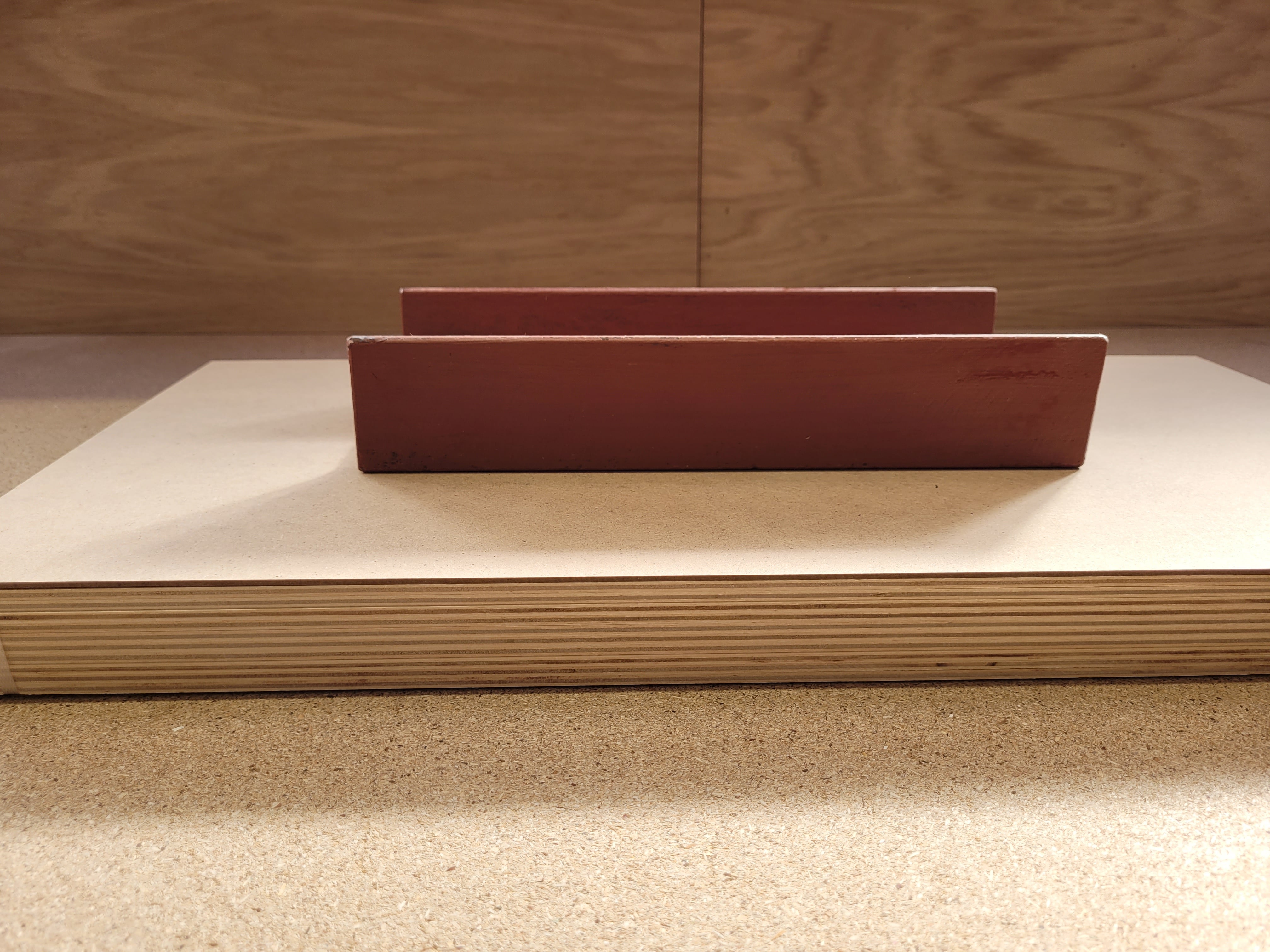
Bonus tips for the laser cutting itself
-
Cut slowly, don't rush: Higher cutting speeds often generate more heat and lead to warping.
-
Multiple thin cuts instead of one thick one: If possible, cut multiple times at low power instead of once at high power. This keeps the wood cooler.
-
Use heat-resistant mats: Some mats prevent the laser heat from reflecting back and thus help keep the wood more stable.
Conclusion
Wood warping during laser cutting can usually be avoided if you store it properly from the start, prepare the wood well, and stabilize it during cutting. With some planning and the described measures, your wood panels will be more stable and provide you with clean cutting results.


